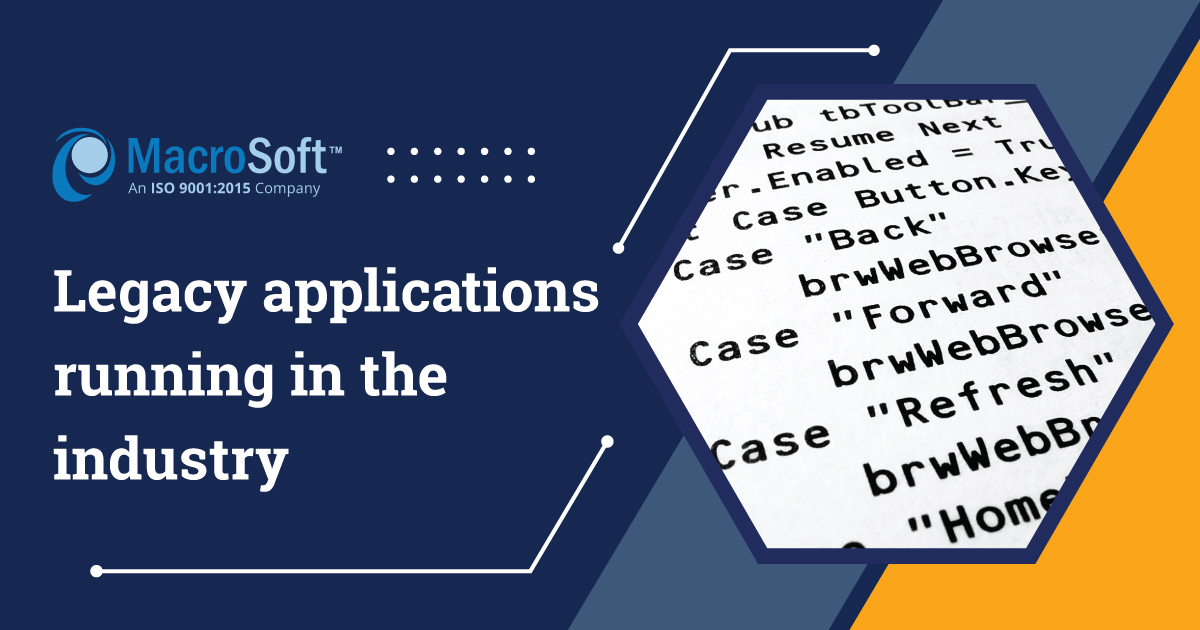By Ghulam Nabi Shah, Nellaiappan L | Published on January 24th, 2023 | Last updated on January 24th, 2024 |
A legacy application is a software program or system that is outdated or no longer supported by its original developer. An organization may still use it, but it is often difficult to maintain or update due to its age, lack of compatibility with newer technologies and lack of resources. Legacy applications can pose a security risk and may not be able to meet the needs of the organization in terms of functionality or scalability.
Some examples of old or legacy technology languages / packages include:
- FoxPro/ Visual FoxPro
- Visual Basic
- C / C++/VC++
- COBOL (Common Business-Oriented Language)
- Lotus Notes
- FORTRAN (Formula Translation)
- Pascal
- Prolog
- BASIC (Beginner’s All-purpose Symbolic Instruction Code)
- LISP (List Processing)
- Ada
- PL/I (Programming Language One)
- ALGOL (Algorithmic Language)
- Borland Delphi
- dBase
- MS-Access 2000 and below
- Lotus 1-2-3
- VisiCalc
These languages were popular in the past but are now less commonly used and have been replaced by newer languages/packages such as Java, Python, ASP.Net, C#, JavaScript, Angular, ReactJS, Office 365, Google Sheets and so on.
Same like languages, variety of old databases were widely used in the industry. And some are still being used as of today. Following are some old or legacy databases:
- IBM’s Information Management System (IMS)
- Integrated Data Store (IDS)
- Virtual Storage Access Method (VSAM)
- CODASYL (Conference on Data Systems Languages)
- Microsoft Access
- Ingres (Relational Database Management System)
- Sybase (Relational Database Management System)
- Informix (Relational Database Management System)
- Oracle version 7 and below
- Microsoft SQL Server version 6.5 and below.
- FoxPro
These databases were popular in the past but are now less commonly used and have been replaced by newer databases such as MySQL, PostgreSQL, MongoDB, Oracle version 11g and above, Microsoft SQL Server version 2008 and above, and so on.
Companies using old technologies are considering the following challenges and planning to migrate to modern technologies:
- Support and maintenance is a challenge. The resources of legacy technology are less and decreasing. For some of the old technologies, the current resources are the only one who knows about their application. Support from the provider is long ago stopped or will be soon stopped. This is a huge risk for business continuation.
- Compliance with Security Regulations (like GDPR) is a major driver for change. Old systems have their limitations, and they may not comply with higher levels of security.
- Older databases are not efficient as they used old techniques. Modern scalability requirements becoming a challenge for these databases.
- Most of the old languages and databases were designed for the 32-bit operating system. Now the world is moving towards 64-bit computing.
There are a large number of business-critical applications still running in the industry with Legacy applications. There is a huge risk involved in running those applications as they are not having any compliance with the latest security/industry standards. In case the environment is getting affected or the application stops working, it might create a huge loss and customers are getting affected. The turnaround time to rectify the problem will be huge due to the unavailability of skilled resources for those Legacy technologies.
Shah is a forward-thinking corporate leader with twenty years of experience delivering top-notch customer solutions in large scale and enterprise business environments. As a technology visionary and driver of strategic business systems development, allow Macrosoft to deliver best-in-class software solutions. Shah’s profound expertise includes business strategy, product development, enterprise-wide architecture, application migration, IT transformation, and international development management. Shah holds multiple professional and technical certifications, scholastic degrees, and an MBA.
Nellaiappan is the Application Delivery Manager for Macrosoft's .NET migration team. Subsequently, Nellai leads the Migration Service to migrate client legacy systems to the latest technologies such as .NET. As a PMP certified professional, he has received accolades from clients for his efficient leadership. Incidentally, during his first migration project, Nellai accelerated the migration resulting in a new service offering from Macrosoft. Later, Nellai worked on an array of proprietary migration tools that form the backbone of the Migrations Practice at Macrosoft.
